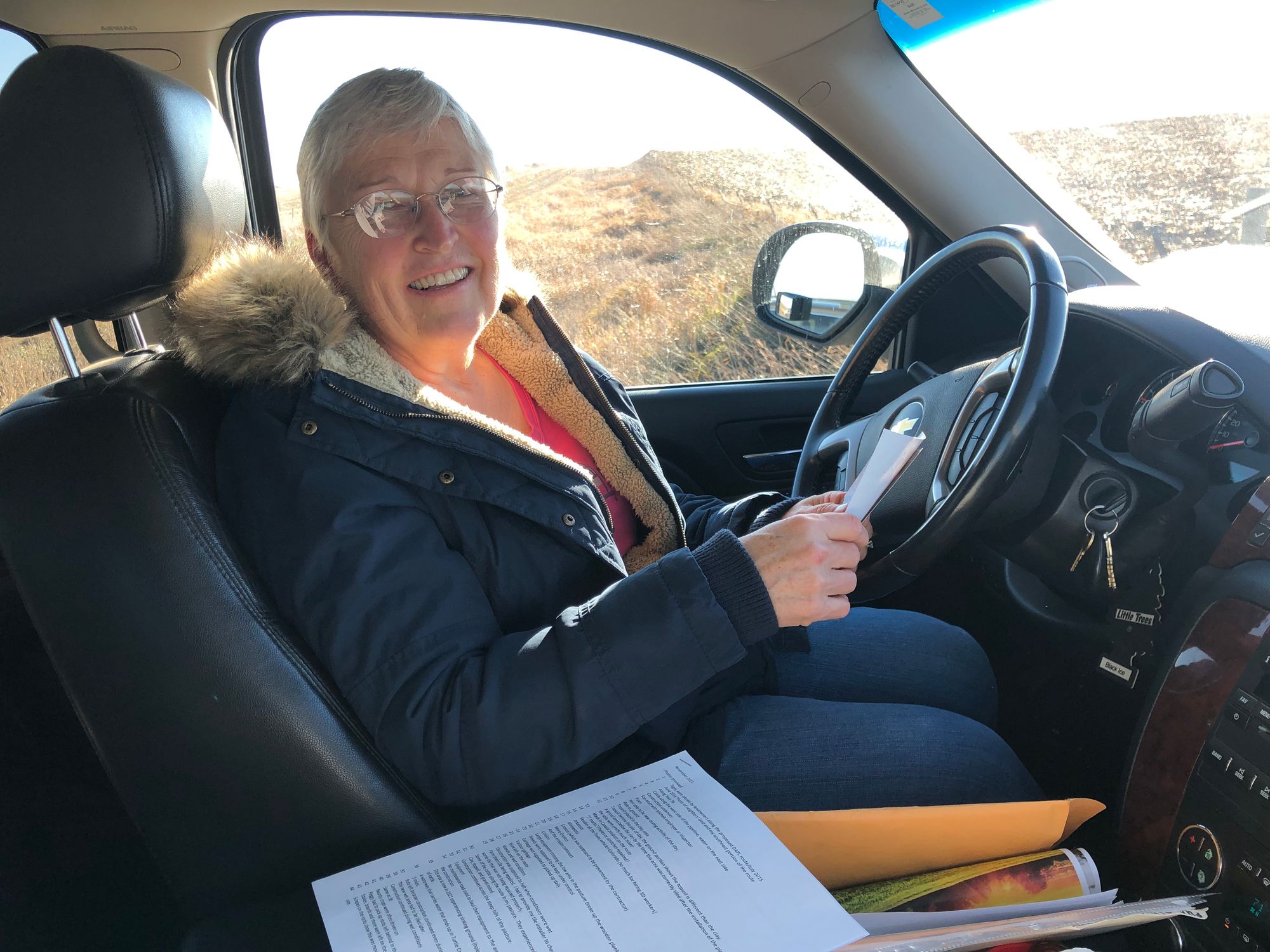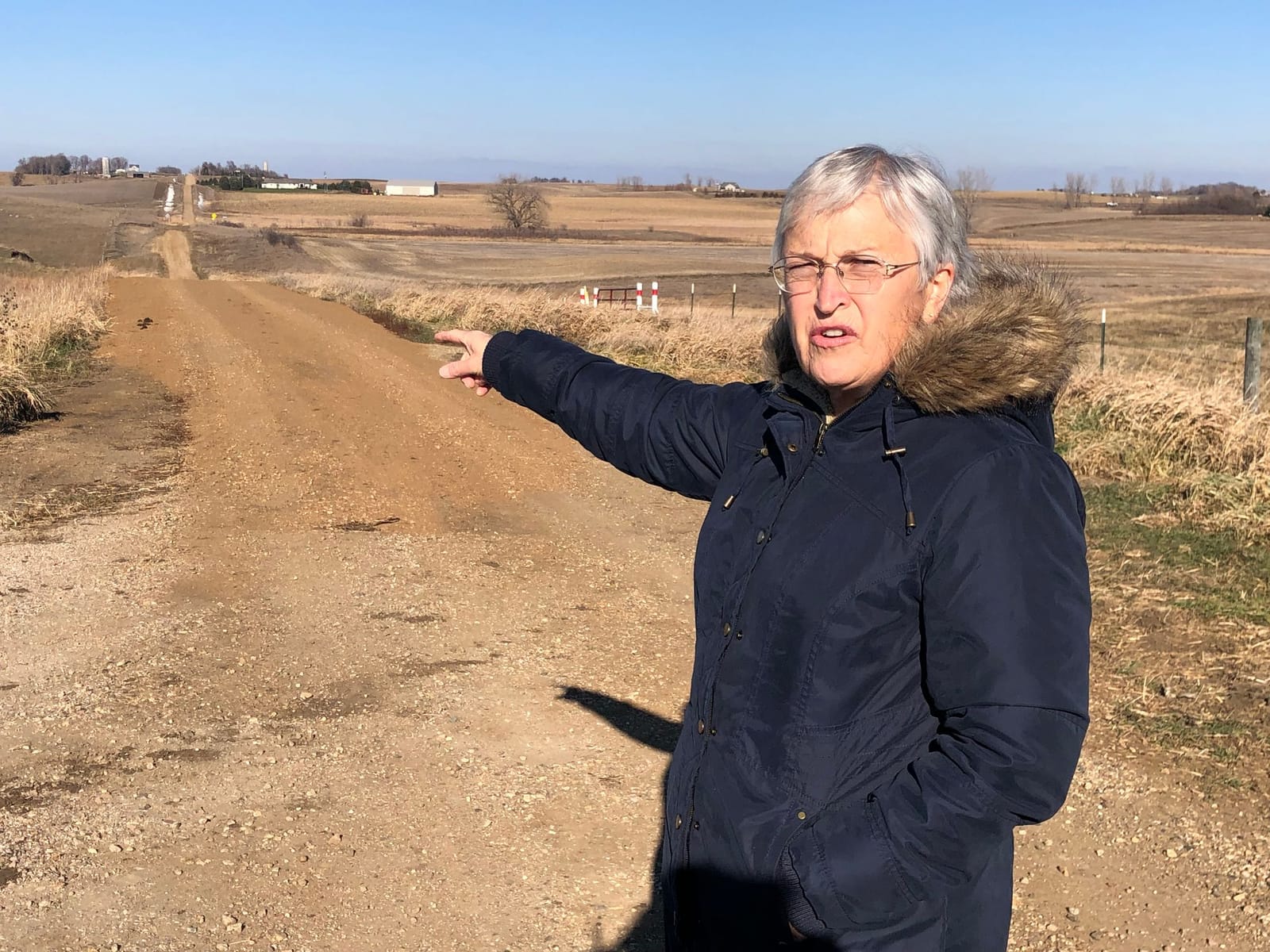Editor’s note: This article was produced through a partnership between South Dakota News Watch and the Solutions Journalism Network, a national non-profit group that supports rigorous journalism about responses to problems. This is Part 2 of a two-part series; Part 1 published on May 2, 2022.
Peggy Hoogestraat is a wife, mother, grandmother, farmer and rancher who also happens to be one of the most knowledgable, organized and relentless opponents of underground pipelines being built across South Dakota.
Hoogestraat’s path from gray-haired granny to grizzled anti-pipeline activist was laid in 2014 when she began a battle to protect her ranch land in Minnehaha County from becoming part of the route for the Dakota Access Pipeline.
After being sued twice, putting thousands of miles on her pickup to attend numerous meetings and hearings, spending significant sums on legal fees and holding out for as long as she could, Hoogestraat eventually succumbed to an eminent-domain ruling that forced her to allow the multi-state DAPL oil line to be buried on her land.
And then, a letter she received in the mail in 2021 — sent by Summit Carbon Solutions of Iowa — reignited her passion to prevent a pipeline from crossing that 287-acre parcel west of Hartford. This time, it was a proposed carbon-capture and sequestration pipeline that would carry CO2 across the same parcel where her son raises crops and runs cattle and where the DAPL now lies beneath the surface.
To Hoogestraat and a few hundred other eastern South Dakota landowners, the pipeline plan by Summit, and another CO2 line being proposed by Navigator Carbon Ventures, are an offense to their land and their lives.
Not only do they see the pipeline as an interference on their property rights, but they also worry over the loss of usable farmland and ranch land and are concerned over the risk that a leak could someday poison people or animals. They also resent the time, money and emotions they expend in trying to fight off the pipeline firms or to ensure impacts from the intrusion are as limited as possible.
Certainly, some property owners along the proposed pipeline routes welcome the use of their land, and see buried pipelines as safe and unobtrusive. They likely see the lease payment for use of their land as an unexpected bonus, and will gladly accept up to three years of payments for any crop losses.
An official with the South Dakota Public Utilities Commission, which has permitting authority over the two pipeline proposals, said the number of people signed up to comment on the Summit pipeline is the most of any utility project in recent memory.
Among the many opponents, some interviewed by News Watch, the unwanted use of their land cuts deeply into their beliefs that private land is sacred, that it is part of a family’s soul spanning generations, and that it should not be interfered upon without their permission or for great cause.
SPECIAL REPORT: Proposed CO2 pipelines thrust South Dakota into billion-dollar debate
“I was raised to be a steward of the land, with an understanding that it’s a gift to me while I’m here on this earth, and that I need to take the best care of it while I can,” Hoogestraat said. “You have a connection to the land that nobody can really understand unless they are in the same situation. Not only does it provide an income for your family, but you have the connection of family that has gone before and what they did to make it productive, and you have all those memories that have been made out there in the fields, and the pastures, and as you fix the fences or walk the land, all those things come to you.”
Hoogestraat is also angry that the oil pipeline on her land may prevent her or future generations of her family from selling or developing the land, which is located in a high-growth suburban area west of Sioux Falls.
Hoogestraat looks back with a mix of anger, sadness and sometimes humor on how the pipeline battle changed her as a person. But there’s no question the three years of grappling with DAPL officials over use of her land, and the impacts of the digging, pipe-laying and attempts to return her land to normal, have stiffened her resolve to fight for her own land and the rights of other landowners.
“I feel very sorry for the people who have to go through this,” she said.
In the legal fight, she spent time and money and was sometimes separated from her husband and family while meeting with land agents, attending PUC meetings or sparring with lawyers. She insisted on personally overseeing construction work to ensure safety and the sanctity of her land, putting 1,400 miles on her truck through daily trips from her home in Chancellor to the ranch land about 20 miles north.
During construction, her drain tile that controls water flow was damaged and had to be fixed. A group of cows were once locked away from their water source and had to be rescued.
Since oil began to flow, the pipe on her property leaked, and she was never told how much oil had seeped onto and into her land.
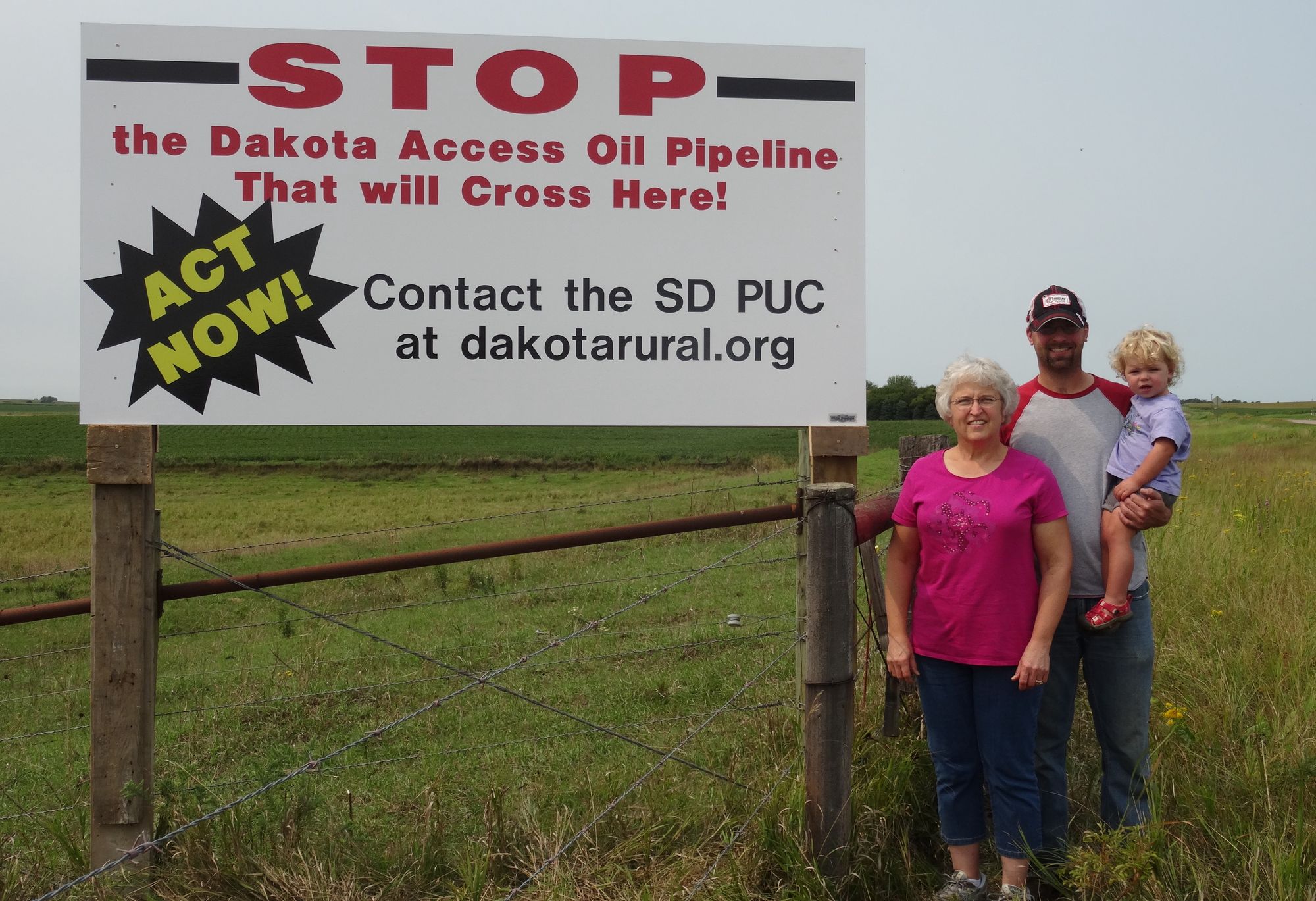
Mixing of soils during pipeline construction has led to reduced crop production. She now sees changes in water flow that require adjustment of ranching methods, and depressions in the soil along the pipeline route create risks of damage to the legs and hooves of cows.
“Just the other day I went out and took pictures of the route, and there are sinkholes in that pasture and I’m watching to see how severe they get before something has to be done with that,” she said. “I don’t want the cattle to be hurt when they walk in those holes created by the pipeline.”
Hoogestraat, 65, acknowledges she is somewhat of an unexpected activist. She sometimes wonders if her determination to fight the pipelines has its roots in a successful battle she fought against breast cancer some years ago, and also in part to her strong faith in God.
“I went through cancer myself, and that was a piece of cake compared to these pipelines,” she said. “I hate to say that, but it’s true.”
Looking back on the DAPL fight, considering the wall of boxes of legal materials she collected, and thinking of how she has gained knowledge and strength to fight another pipeline, Hoogestraat allows that in some ways she has always been someone who doesn’t like to be pushed or sit by idly while someone else is suffering.
“Everything I do, I give my all; let’s put it that way,” she said. “I have had to be responsible for a lot of things in life and I’ve learned from those experiences that I do not like to see people mistreated and I do not like dishonest people.”
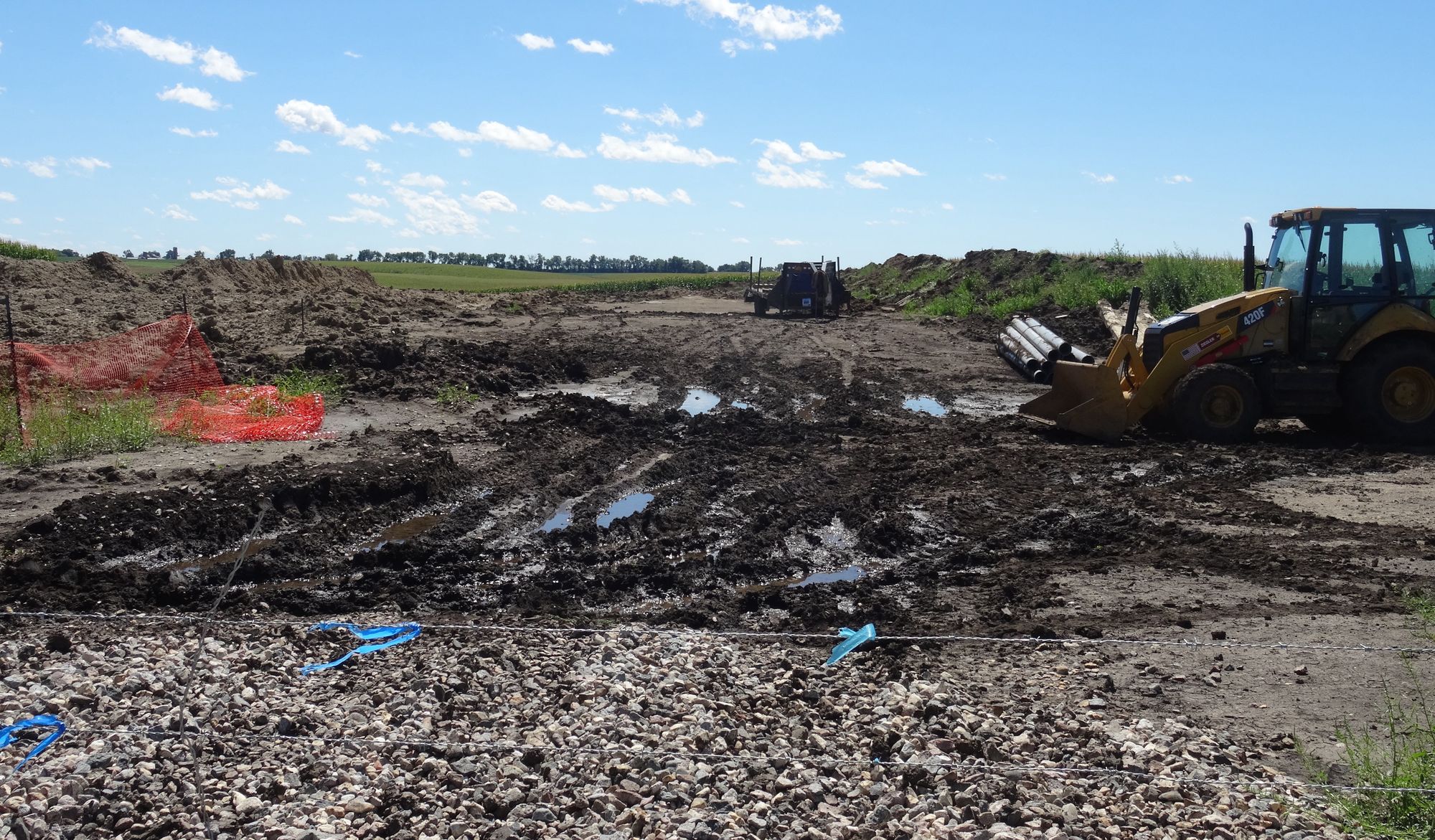
CO2 pipeline companies vow to be good stewards
Both the Summit and Navigator proposed pipelines would use carbon-capture and sequestration technology to collect carbon dioxide from ethanol plants, pressurize it into liquid form and ship it to a site where it can be pumped and held deep underground for years.
The 2,000-mile, $3.7 billion Summit Carbon Solutions pipeline would cross 469 miles in South Dakota, carrying CO2 north from 32 ethanol plants in five states to a site in central North Dakota, where the CO2 would be buried more than a mile underground.
The South Dakota portion of the Summit project was submitted for permitting to the PUC in February, and a public hearing is expected to be held before the end of 2022.
The $3 billion, 1,300-mile Navigator project would capture CO2 from 20 ethanol and fertilizer plants in five states. The Navigator pipeline would cross 111 miles in South Dakota and terminate at a site in central Illinois. Navigator plans to submit its pipeline permit application to the PUC this summer, said Elizabeth Burns-Thompson, a company spokeswoman.
Combined, company officials say, the two CCS projects would capture carbon equivalent to eliminating emissions from 5.8 million cars a year. They also point to positives such as creation of thousands of jobs, new tax revenues for states and local governments, and raised profits of ethanol plants that may be able to sell biofuels into new low-carbon markets.
During a legislative hearing on the Summit project in January, state Sen. Lee Schoenbeck, R-Watertown, said he was concerned that Summit was not being straightforward with property owners along the proposed pipeline route. At one point, Schoenbeck said, the pipeline route would have run through a proposed new development in his district and “ruined” the housing project.
After he contacted Summit, the company emailed him an hour later to tell him that the route had been moved away from the development. But Schoenbeck said the landowners were never told the route had been moved away from their properties.
“What happened in my community was not right, so they should make sure they’re doing a better job of talking to landowners,” said Schoenbeck, an attorney in Watertown. “My only concern is that they need to make sure they’re straight-up honest with the landowners.”

During the hearing, Schoenbeck asked questions about funding of the pipeline proposal, offering that the project was only “some kind of goofy tax-scheme thing.” Summit is taking advantage of federal CCS tax credits, and the Navigator project is being funded by a large private-equity group.
In a subsequent interview with News Watch, Schoenbeck said reducing carbon emissions and expanding the market for South Dakota ethanol plants are “laudable objectives,” but added that he is wary of any project so deeply subsidized by federal tax dollars.
“It’s not my world to tear apart the finances of that pipeline, and it wouldn’t be fair to call me a proponent or an opponent,” Schoenbeck said. “But I’m a conservative, so anybody that is playing around with the market based on government programs, I have to look carefully at those deals.”
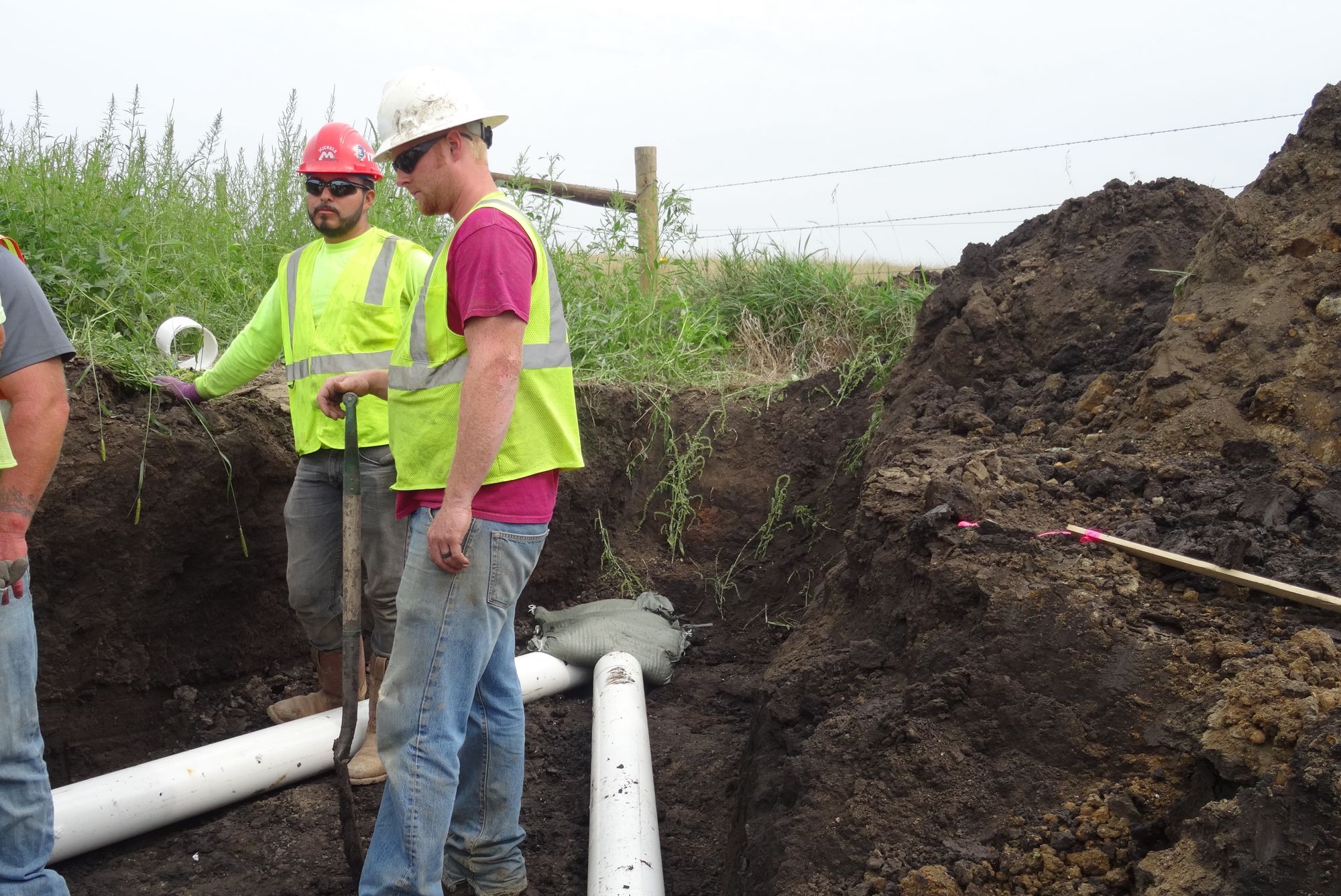
Jake Ketzner, a spokesman for Summit, said the project is receiving strong support among regulatory officials and landowners based on its goals of removing carbon from the atmosphere and for creating thousands of new jobs.
But CO2 pipelines also benefit corn farmers across the Midwest, Ketzner testified before the South Dakota Legislature in January. Carbon-capture projects strengthen the long-range market for ethanol producers, which also provides farmers a valuable and consistent market for their corn.
“There’s folks who really support these projects for the environmental purposes, and there’s folks in our particular case who support it for what it’s going to do for agriculture and the corn markets,” he said. “It’s not just the landowners on our route, it’s every corn grower in these states that will be positively affected by this project because we’re going to drive demand.”
Ketzner said the CO2 pipelines will strengthen rural economies in the short term and in the long term.
“If every other row of corn, or close to that, goes to ethanol plants, and that demand goes away in five or ten years, we’re going to see a significant problem in our rural economies,” he said.
Elizabeth Burns-Thompson, a spokeswoman for Navigator CO2 Ventures, said the company intends to work closely and in harmony with landowners along the 1,300-mile route of its Heartland Greenway CO2 pipeline project that crosses five states.
For example, Burns-Thompson said Navigator intends to bury its CO2 lines five feet below the surface, much more than federal standards that require only 30- or 36-inch depths.
Affected landowners on the 111 miles of pipeline planned for South Dakota should have received information packets in the mail, and Navigator has extensive information about the project on its website.
She said Navigator hopes to find workable solutions for use of land that will not include eminent domain, which is a legal taking of land for public use.
“Eminent domain is not something we want to do, and it’s a tool that’s available, but we’re seeking a voluntary process,” she said. “Holistically, we want to put forth a project that not only are we proud of but that the communities and landowners across the project are proud of, and that takes listening and doing it right.”
Both Summit and Navigator have hosted numerous listening sessions with affected landowners. Navigator is also hiring a tribal consultant to address any concerns of Native American individuals, tribes or communities, and will conduct a cultural survey on the pipeline route in the coming months, Burns-Thompson said.
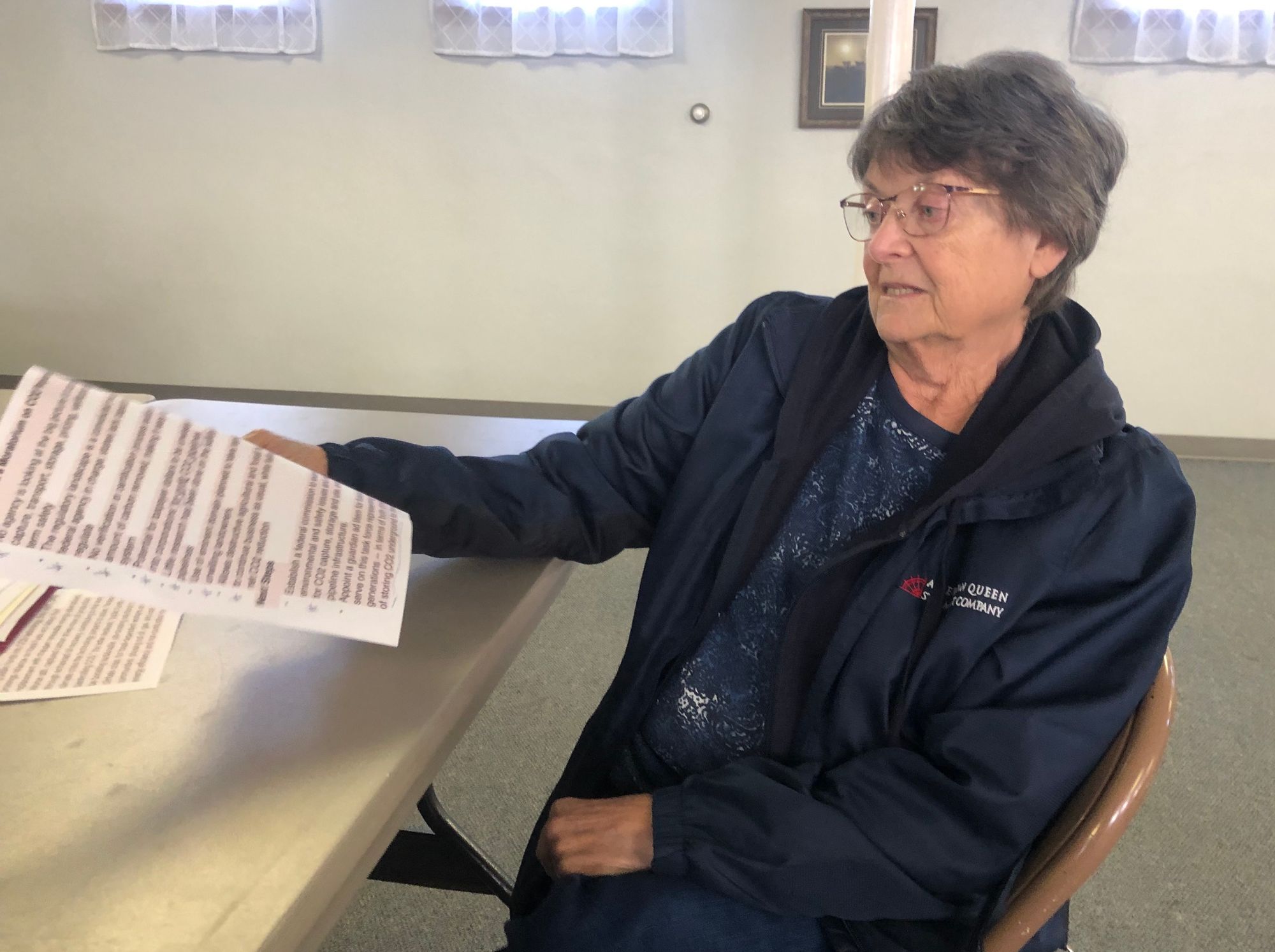
Pipeline battle far from over
Betty Strom is a retired teacher from Sioux Falls who owns land south of Madison, S.D., that is home to part of the Dakota Access oil pipeline and is now being eyed by Summit to run its CO2 line.
Strom opposed Dakota Access five years ago and is opposed now to Summit’s proposal.
“Why would you put a pipeline next to DAPL when we had such a horrible time with that?” she asked.
Strom ultimately allowed the oil pipeline on her land before the matter reached court to avoid the costs and stress of facing eminent domain.
Strom said she received a payment for use of her land by DAPL and will likely be compensated by Summit as well. But she said she ended up paying much of that money in new taxes.
Strom sees the pipelines as an unlawful, unfriendly taking of her property to benefit big corporations while leaving her with a pipeline she doesn’t want, the stress of negotiating with pipeline officials and land that she said becomes less valuable.
“I don’t fall under their bleeding-heart rhetoric that they’re doing this for the environment,” she said of Summit and Navigator. “It’s all about a group of businessmen and women who want to make a profit. It’s almost like a taking of my property for their benefit, and I’m being paid cents on the dollar of what they’re going to make.”
Strom said she understands that some neighboring landowners welcome the pipeline and any payments they may receive. But her connection to the land runs deep.
“There’s a lot of reasons we value our land, and when you’re out here in the middle of nowhere, you don’t expect some big outfit to come plowing through it,“ she said. “I have a lot of respect for this land, and there’s a lot of blood, sweat and tears that went into buying it.”
Charlie Johnson runs an organic farm on leased land near Strom’s property in southern Lake County. Johnson took a vocal stand against DAP when it crossed the land he farms, and will do so again regarding the Summit project, also targeting the land he farms. Johnson feels sorry for property owners who feel they have no choice but to allow a pipeline on their property, because it is disruptive to the land and to their livelihoods.
“It’s a highway of uncertainty for the landowners,” he said.
Johnson said it took a year for the upturned and mixed soil on the DAP route to recover, and in some cases it remains unproductive.
“Look at the destruction they’ve done cutting through farmable land and a pristine prairie,” he said. “And now, it will be 2,000 miles from Illinois to North Dakota.”
Johnson said property owners nearer to municipalities may see significant future losses in land value if development is halted due to an underground pipeline crossing it.
“If your piece of property 50 years from now is a valuable site for a housing development or something, you’re out of luck,” he said.
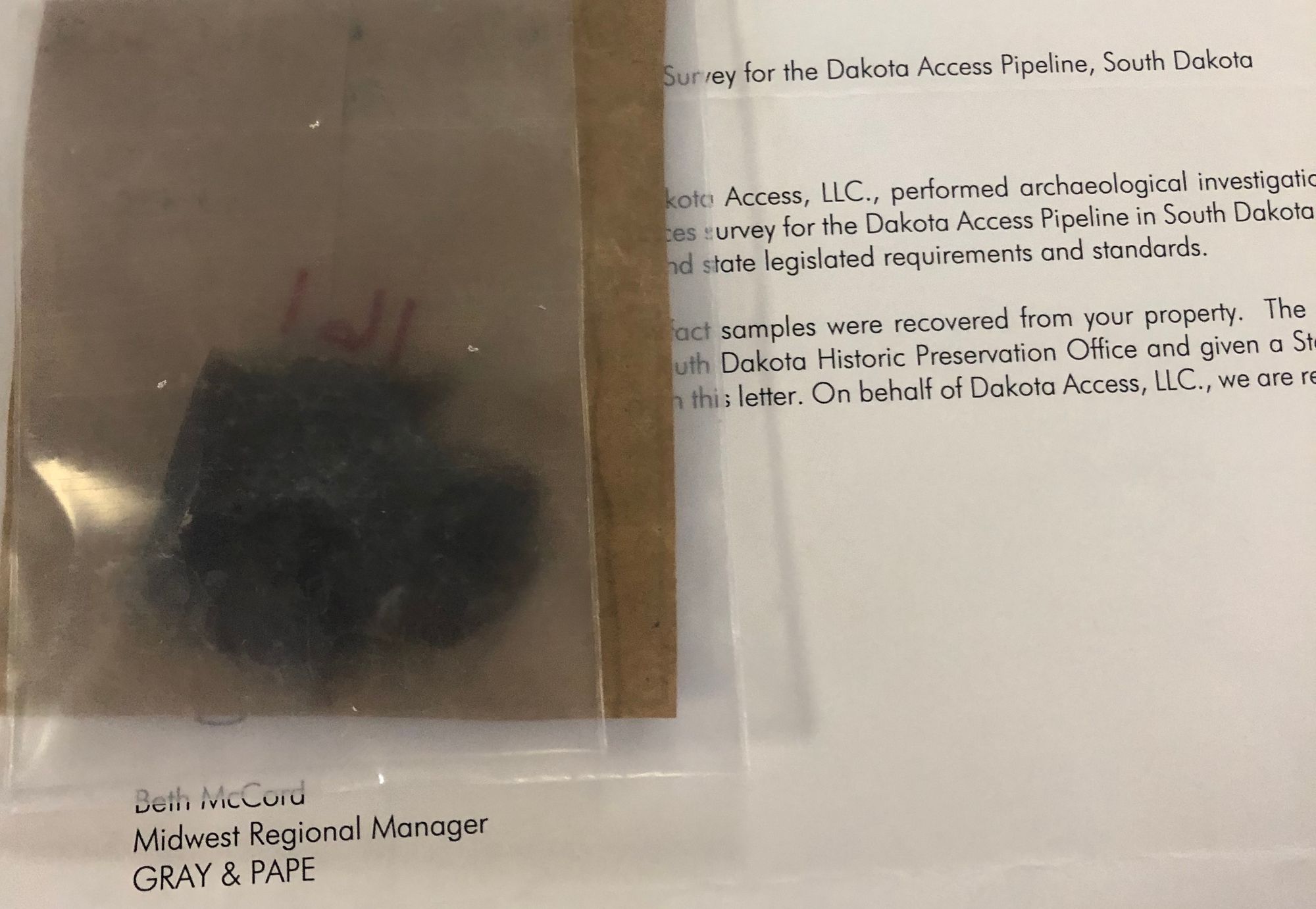
Strom said she wrote on the bottom of her land-use survey agreement that DAPL officials should let her know when they were surveying so she could be present, and to inform her immediately if they found anything of value or historical interest on her land.
“This was Indian territory, it certainly was,” she said.
Strom never heard back from the company, but well after the survey was complete and the pipeline fully installed, she received a package in the mail. It contained a Native American spearpoint.
Strom’s conclusion as to why the pipeline company delayed sharing the artifact with her until after construction was finished: “I think they were afraid I was going to join in with the other opponents,” she said.
Peggy Hoogestraat was never formally notified of any changes in the proposed route of the Summit pipeline, but she recently looked at maps on the PUC website and now believes her land near Hartford is no longer a target of the CO2 project. Despite the good news for her and her family, Hoogestraat said she has no intention of being less involved in fighting for landowner rights during the pipeline planning and construction process.
“I feel sorry for the landowners who have these pipelines on their land,” she said. “It may have had something to do with me being very vocal at a public meeting with them, but it looks like they changed the route away from my land,” she said. “But it doesn’t change my view of the pipeline whatsoever because it’s still going to cross the land of my neighbors and friends and family members. Maybe I can’t stop it, but at least I hope I can help the other landowners in some way, shape or form.”
